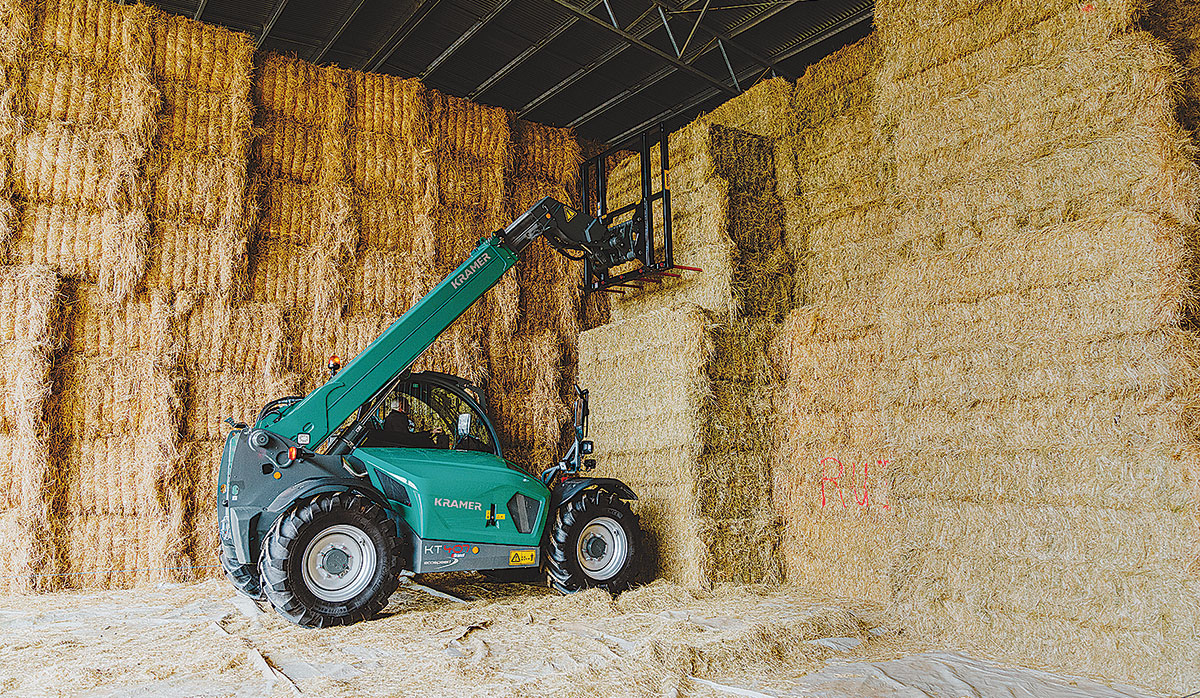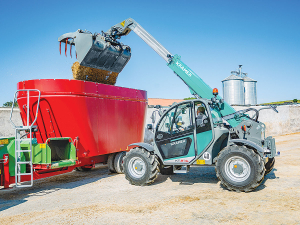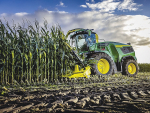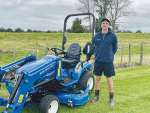The practicalities of dairy farming centre around looking after animals well, and a whole bunch of logistics – largely lifting and loading.
Typically, this might be shifting fertiliser in to store and out of store into a spreader, stacking bales or bulk silage and loader feeder or mixer wagons. While tractors and front-end loaders are still in widespread use, many farmers are coming to realise the value of adding a telehandler to their operation.
The German-built Kramer telehandler range is an important part of the Brandt product, with a range of models available, including the KT144, KT276, KT307, KT407 and KT457, which collectively offer load capacities from 1.4 to 4.5 tonnes, with lift heights from 4m to 7m.
One model finding favour with dairy farmers is the KT276, featuring compact dimensions of less than 2m in width and height, but nonetheless packing plenty of performance. As the numbers suggest, the 276 offers a maximum lift capacity of 2.7 tonnes at ground level and the ability to lift 1.8t to the maximum lift height of 5.73m.
Particularly suited to working in and around the yards, especially areas with tight access, recent upgrades to the KT276 have added greater sophistication to match its larger siblings, being the first in Kramer’s telehandler line-up to offer the option of Smart Attach, an automated attachment changeover system. This is very useful if daily operations include changes between forks, buckets, grabs or bale handlers, making switches fast and safe.
Focusing on the compact dimensions, a choice of height is provided by two cab mounting options. In low-cab guise, the machine stands just 1.98m tall, so is the better choice if access through a low opening is critical; alternatively, the standard cab sits at 2.1m.
Power comes from a 55kW (75hp) Kohler diesel engine mated to a three-range fully hydrostatic transmission that propels the KT276 to a top speed of 30km/h or 40km/h option. Standard spec includes a selectable two or four-wheel drive system and front, rear and crab selectable steering modes.
As well as a 103-litre/ min gear pump with load-independent flow-rate distribution hydraulics, engineers have improved productivity by relieving the operator of needing to set a precise bucket or fork angle after it has been dumped. This function joins existing automated controls, including the vertical lift mode that extends the boom’s telescopic section as it is raised and retracts it as the boom is lowered.
 |
|---|
|
Many farmers are coming to realise the value of adding a telehandler to their operation.
|
The Smart Attach, quick attachment changeover system, sees oil passing through one of the locking pins, so attachments using a third service can still be coupled without the operator needing to leave the cab.
Further automation sees as standard three functional modes of bucket, stacking, and manual – all easily managed through the ergonomic joystick.
On the safety side is a Smart Handling overload protection system that helps to keep everything under control in all high reach or loading situations to prevent overloading, and further eliminates the chance of the machine overturning, while also handling many routine tasks.
The Kramer cab offers plenty of head and legroom, low noise levels and a comfortable seating position, while clever ergonomics sees all control positioned with quick access to the most frequently used functions, with switches labelled by colour according to functional groups.
All machine information for the machine is readily available on the display, while also providing access to optional functions, including joystick sensitivity and return to angle adjustment.
Visit Brandt at site number 15.



















